I know we all lead busy, stressful lives and barely have five minutes to breathe, leave alone pick up a pencil and paper and start sketching. But for me, art is a form of relaxation and taking some time out to draw helps me wind-down and gather my thoughts. Not to mention the satisfaction that comes from looking at finished drawing. So, I thought I’d share a few posts on how to draw different things, starting with one of my favourite subjects… dolphins.
Unless you want to be limited to drawing vases of flowers or apples in a bowl still-life style, I find it best to draw from a good photo. That way you can draw anything that appeals, and if you chose a photo from a trip, that’s a perfect souvenir right there that you’ve created yourself. After my trip to The Bahamas, I had lots of incredible photos of dolphins underwater. Dolphins are a good subject for beginners- they are not covered in fur or difficult textures, and the sun shining through the ocean makes for interesting light that is easy to capture with some shading.
This is the original photo I based my sketch on:
 I chose this one because I liked the way a little pod of dolphins was in focus, with ones of various sizes. The sun has cast interesting light onto the dolphins and you get a sense of their movement through the water.
I chose this one because I liked the way a little pod of dolphins was in focus, with ones of various sizes. The sun has cast interesting light onto the dolphins and you get a sense of their movement through the water.
You will need:
- A sketchbook/ piece of clean white paper (I like using my A5 sketchbook, that way I have all my drawings in one place and the pages are thicker than normal paper so good for any kind of medium).
- A sketch pencil- I suggest either HB or 2B, no thicker than that
- A few other graphite pencils for shading- 3B, 4B, 5B, 6B and 8B
- Charcoal pencils, oil pastels, or water colors, depending on how you want to finish your picture, or any other media you want.
- An eraser
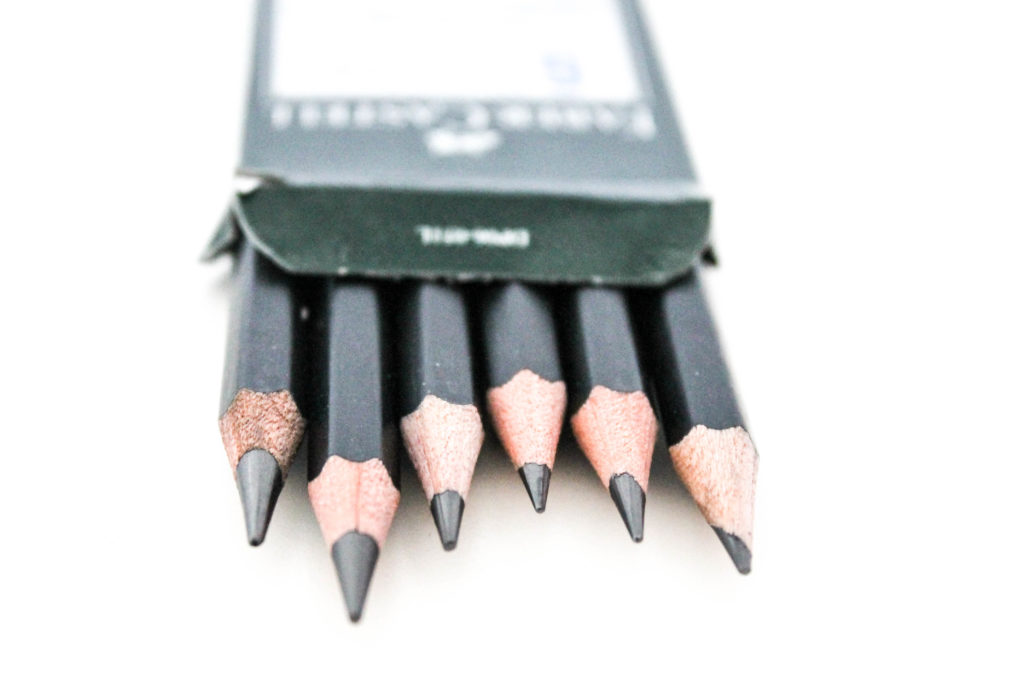
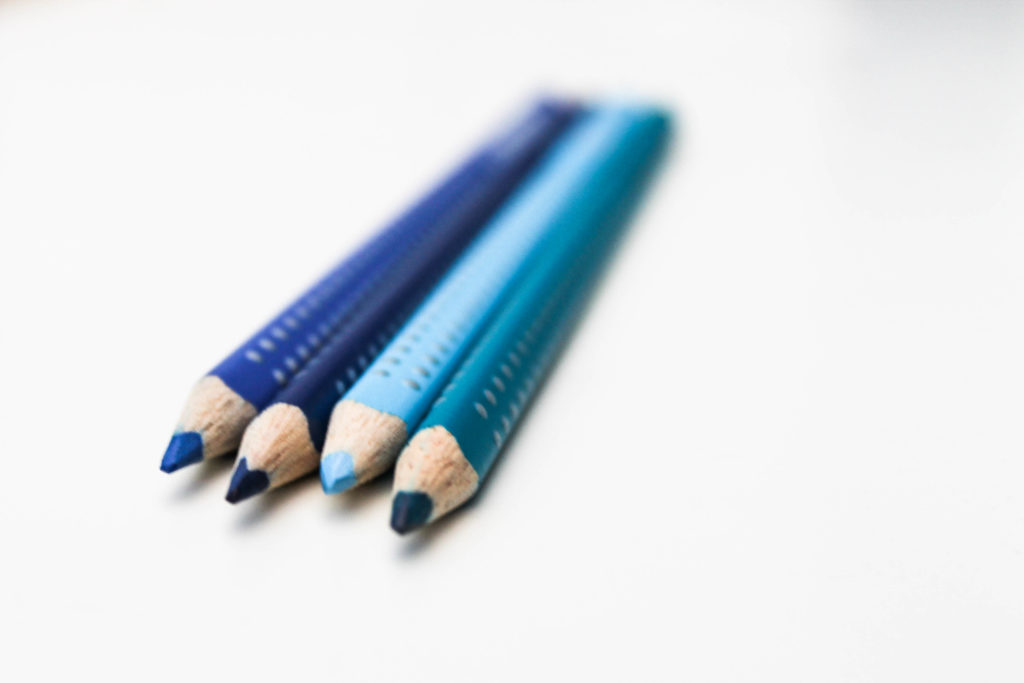 Step 1:
Step 1:
Familiarise yourself with the photo, its composition. Note the position of the dolphins- which part of the space they fill, the pod they form, their relative sizes. Think about how true to the original photo you want to be, its fine to change things slightly; the photo is just a guide after all. I didn’t want the flippers of a snorkeller in my drawing, so I ignored that, and decided to base my sketch around the three dolphins swimming close together, plus the other two in focus.
Step 2:
Sketch the basic outline of the dolphins using a 2B or HB pencil. Don’t worry about details yet or how neat it is, just aim to get down where you want the dolphins to be and their vague shapes.
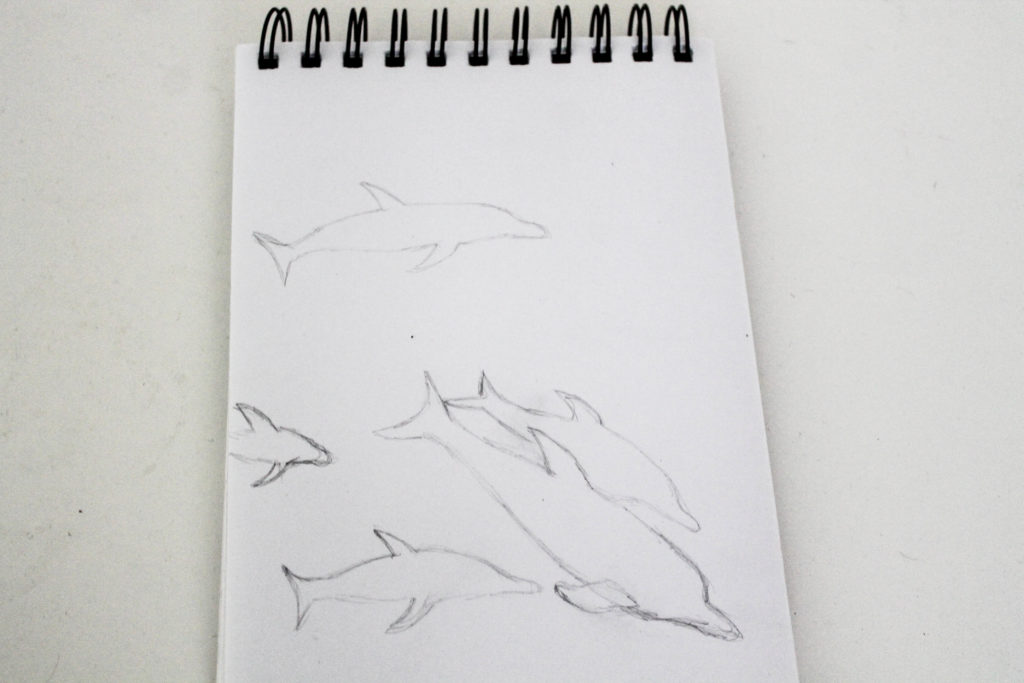 Step 3:
Step 3:
Using a 4B, 6B or 8B pencil (the thicker and darker ones), start shading in the darkest areas, like the fins, flippers and eyes.
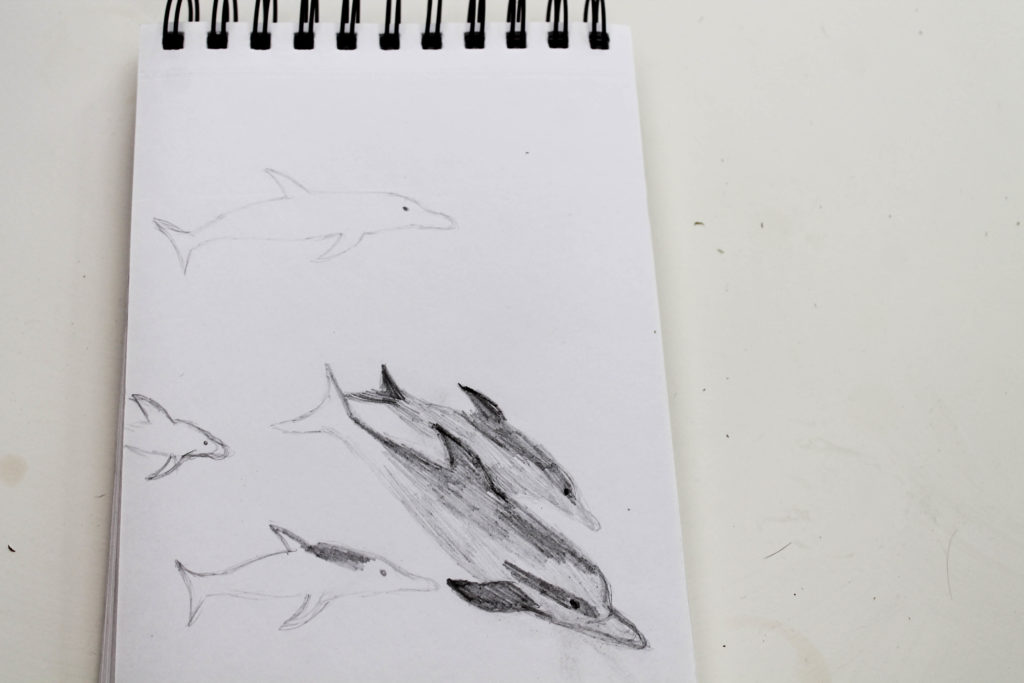 Step 4:
Step 4:
Have another look at the photo and where the light is falling on the dolphins- these areas should be lighter. Use a 2B or 3B pencil to shade these areas. Its best not to actually leave any areas white as this will look too stark, instead darken the darkest areas to deepen the contrast.
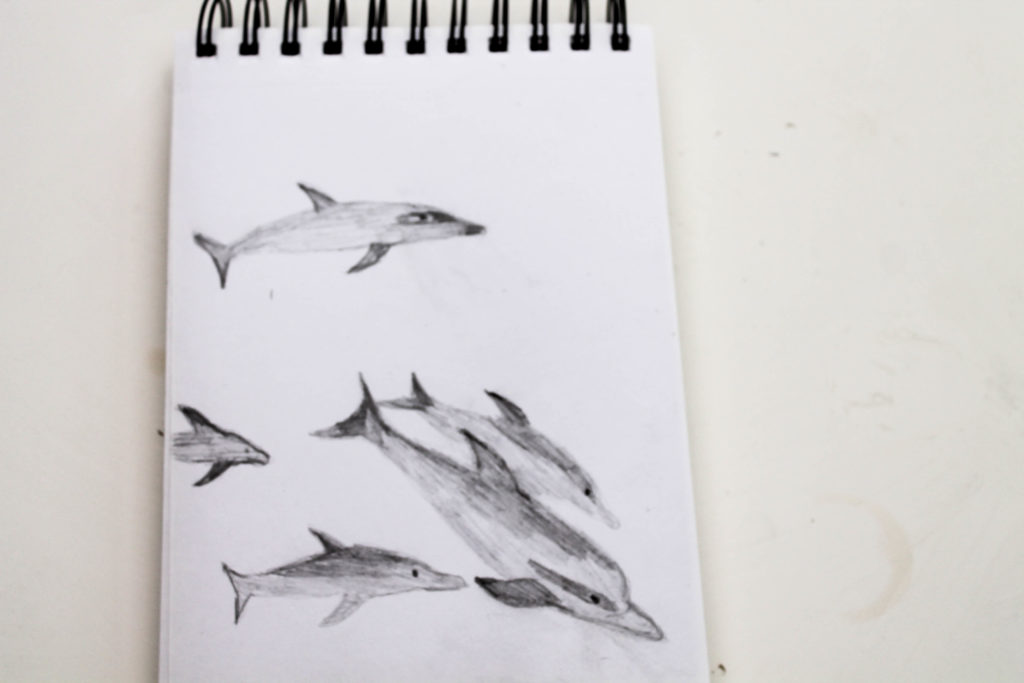 Step 5:
Step 5:
Its spot time! These are Atlantic Spotted dolphins, hence the lovely dotty pattern on their bodies. Don’t worry about accuracy here- obviously you can’t put in every spot in exactly the same place as the photo. Just try to capture the pattern using a variety of sizes of dots and spots. Use a thicker pencil (3B or 4B).
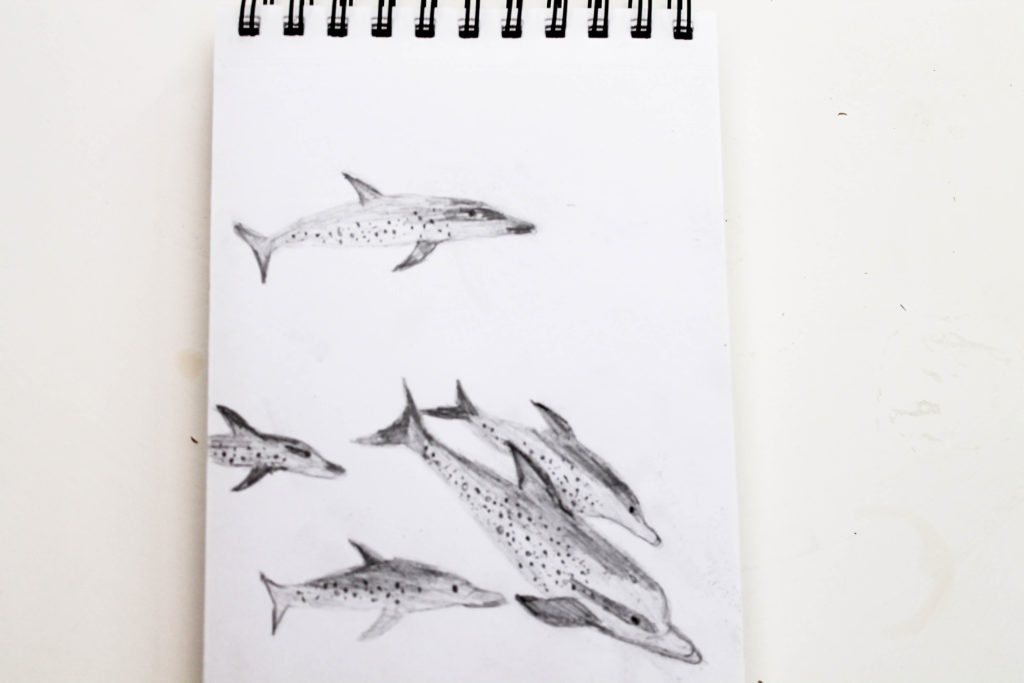 Step 6:
Step 6:
Almost there- its time to add the finishing touches.
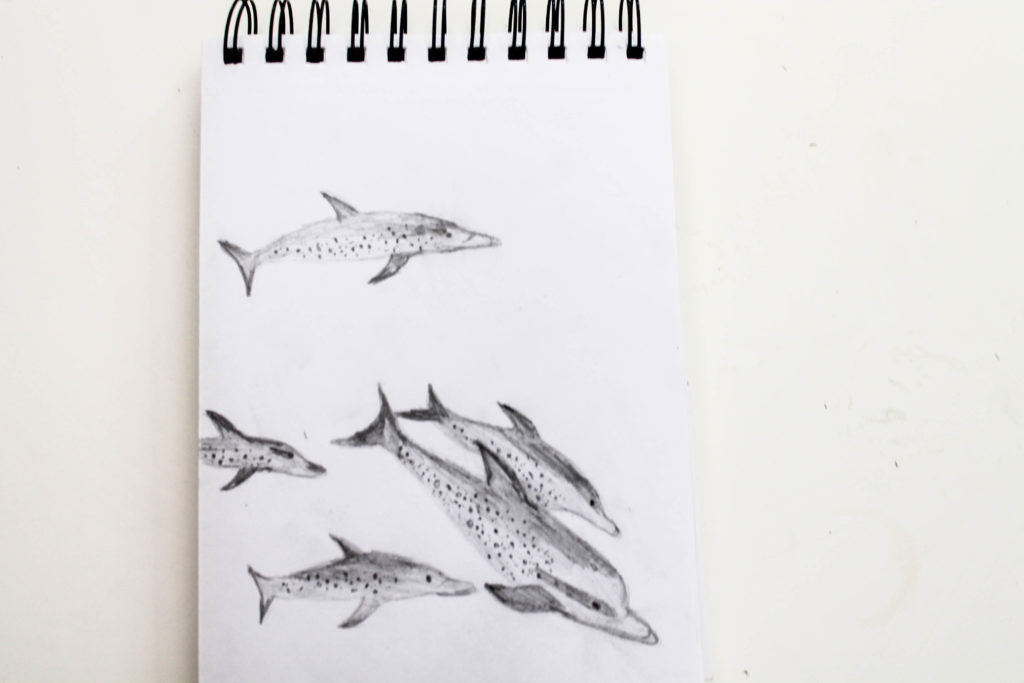 And there you have it, a finished sketch of a pod of dolphins. Now you have infinite choices as to what to do with it. I often just leave my drawings sitting in my sketchbook, but if you’re quite proud of your piece why not take it a bit further? I suggest first making a couple of photocopies, that way you always have the original in your sketchbook that you can return to. You may need to go over the photocopied sketch a bit to darken some of the lines, depending on how dark they were in the original. Once that’s done, its time be creative- lets jazz up that sketch!
And there you have it, a finished sketch of a pod of dolphins. Now you have infinite choices as to what to do with it. I often just leave my drawings sitting in my sketchbook, but if you’re quite proud of your piece why not take it a bit further? I suggest first making a couple of photocopies, that way you always have the original in your sketchbook that you can return to. You may need to go over the photocopied sketch a bit to darken some of the lines, depending on how dark they were in the original. Once that’s done, its time be creative- lets jazz up that sketch!
With colour pencils
Colour pencils can’t blend physically- the only way to blend or mix colours is to allow it to happen in the eye, optically. To do this, you can apply the colour in layers. I started with a baby blue shade, and then added a layer of aquamarine. To the upper part of the drawing I then added lime green, to highlight the shallower depth of the water, and to the lower part I added an indigo layer, to accentuate that the water was deeper and therefore darker.
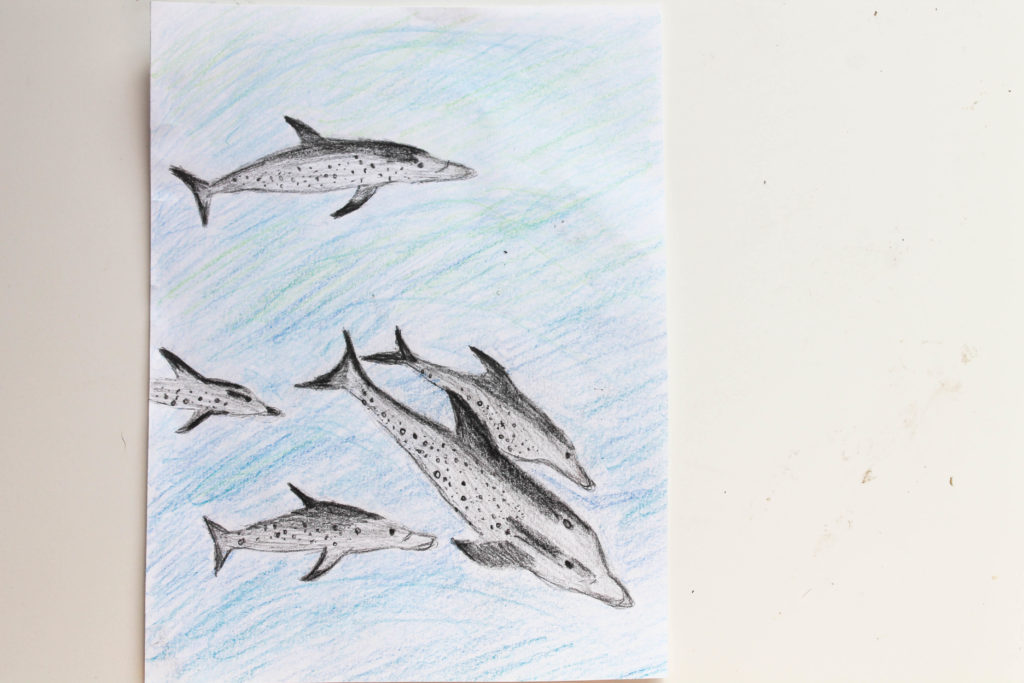 With coloured oil pastels
With coloured oil pastels
I used a similar idea with oil pastels, except with these, you can blend them physically on the paper. Again, I used a pale blue throughout, and added green to the upper part and darker blues and indigo to the bottom to highlight the varying depths of the ocean. I used a grey pastel to colour in the dolphins and then to finish off, I went over them using a black brush pen as the oil pastel is thick and tended to overlap with the sketch- the pen brings the dolphins forward again.
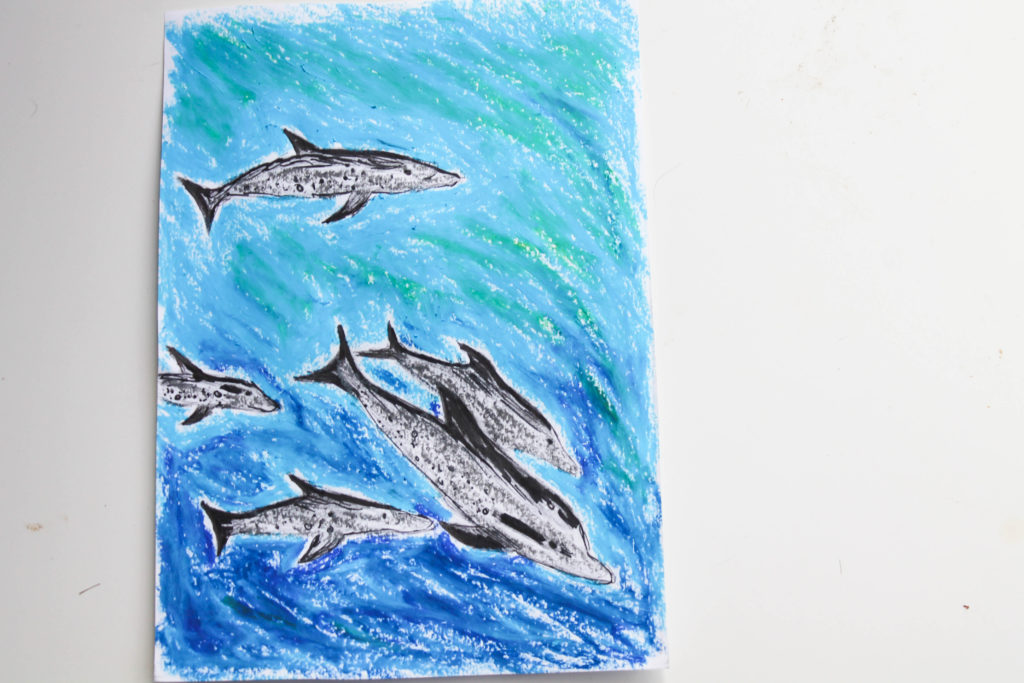 With monochrome media
With monochrome media
I decided to use only monochrome media for this one. I used black, grey and white oil pastels for the background water- again, darker tones for the lower part and lighter tones for the upper part. With this technique you can pretty much use any kind of media you want. I also went over the dolphins again with a black brush pen to bring them forward and highlight the detail of their spots.
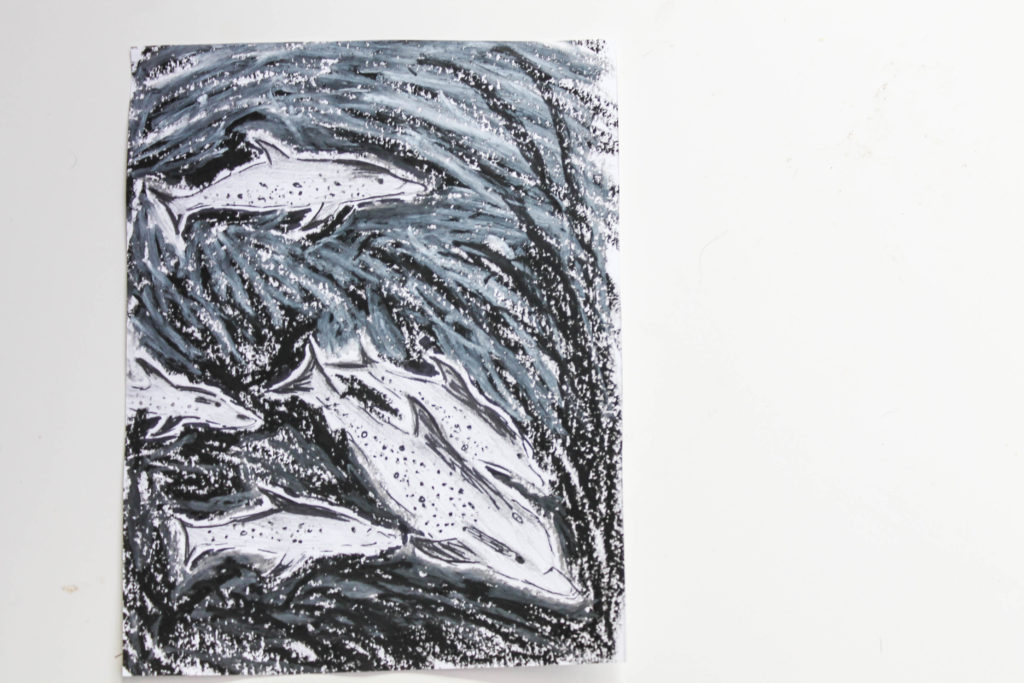 Those are just a few examples of what you can do with your drawing. Once you have that sketch done, you can refer back to it any time, make a photo copy and experiment with different media. Next time I might try making a collage using bits of paper torn from magazines in different shades of blue to form the background, or a pop-arty style one using bright bold pens. Or why not enlarge it, using an A3 sized paper instead?
Those are just a few examples of what you can do with your drawing. Once you have that sketch done, you can refer back to it any time, make a photo copy and experiment with different media. Next time I might try making a collage using bits of paper torn from magazines in different shades of blue to form the background, or a pop-arty style one using bright bold pens. Or why not enlarge it, using an A3 sized paper instead?
Next time you want to reach for your phone or find yourself drawn to your computer, try picking up a pencil and paper, and see where it takes you. Btw, I learned a lot from the book Mastering the art of drawing by Ian Sidaway and Sarah Hoggett, which has lots of helpful hints and tips. I hope you found this useful, and that you’ll give some sketching a go 🙂 Have a great week xx
Credits to Wildquest for the dolphin photo, all other photos and sketches my own.
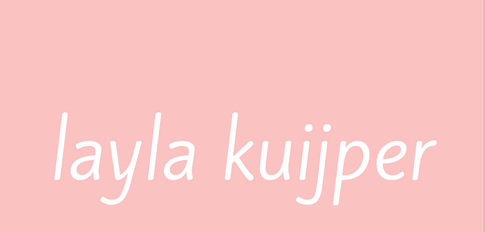
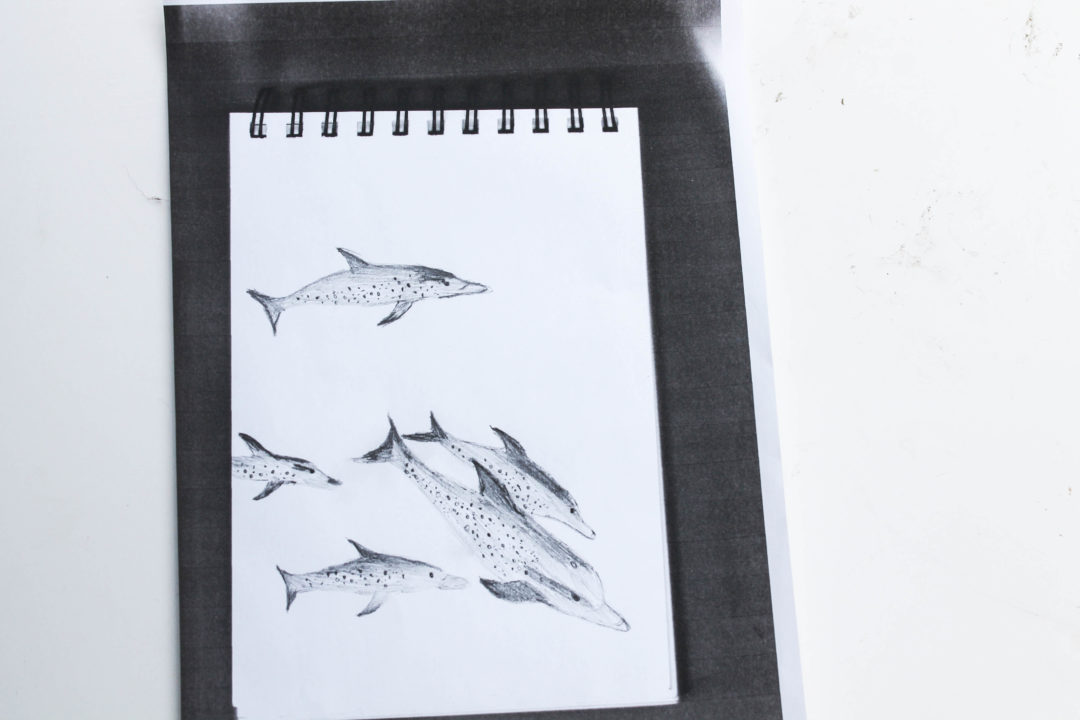
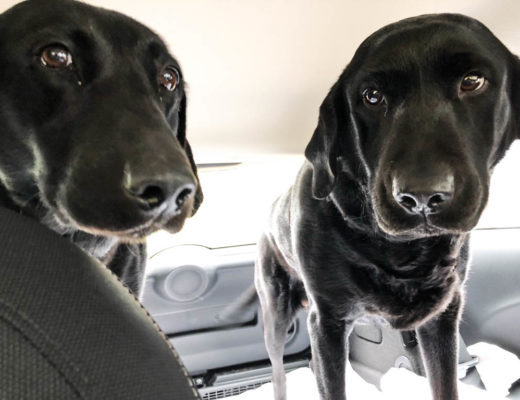
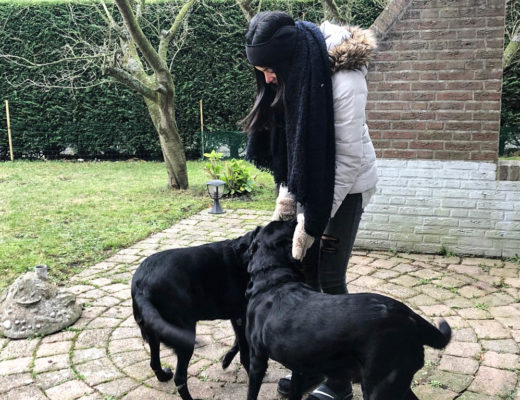

Hi, A nice change of pace for the blog. It is nice to do “more” with the photos etc and this way, you find other ways of making memories and using your creativity. Great photos and you did the step by step illustration clearly.
Worth framing this one.
glad you liked it 🙂
Amazing! What a treasure! Memories inside the frames! Very positive and happy that you are going to shine in whichever field you will be choose in your teaching carrier. Enjoy your time drawing many more memory frames. Real pleasure and enjoyed going through the well explained step by step illustration.
thank you so much 🙂
Very nicely done including a lot of useful tips about using the various techniques. I like the way you illustrate the various steps. I Always enjoyed drawing myself but haven’t done it for years. This is a good inspiration to pick it up again!
you should definitely take it up again… its a good way to relax after work 🙂
your mum would approve 🙂
holy wow these are so good you are so talented! love that monochrome one. you need to draw one for me now 🙂 made me miss art class…
you’re too kind 🙂
haha remember Mme Lannoy’s class???